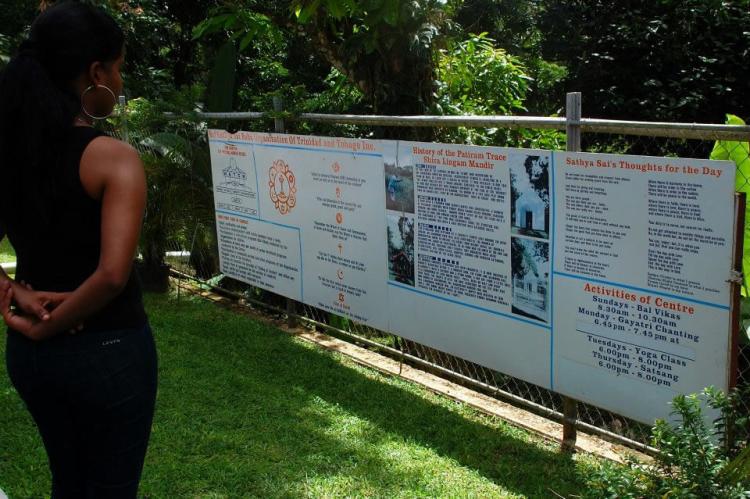Banwari Trace: Trinidad's Oldest Archaeological Treasure
Banwari Trace is an ancient archaeological site on the southwestern corner of the Caribbean island of Trinidad, dating back over 7,000 years. It represents the earliest known human occupation in the West Indies. The discovery of a well-preserved human skeleton, "Banwari Man," is its most significant find.
Banwari Trace: Trinidad's Oldest Archaeological Treasure
Nestled in the southwestern corner of the Caribbean island of Trinidad lies a remarkable archaeological site known as Banwari Trace. This ancient Archaic-period settlement, dating back over 7,000 years, represents the oldest known human occupation in the West Indies, offering a rare glimpse into the lives and lifeways of some of the region's earliest inhabitants.
The Significance of Banwari Trace
Banwari Trace is a pre-ceramic archaeological site that has yielded invaluable insights into the Archaic-period cultures that once thrived in the Lesser Antilles. Excavations at the site have revealed two distinct periods of occupation, the first lasting from approximately 7,200 to 6,100 years before the present (BP) and the second from 6,100 to 5,500 years BP.
The significance of Banwari Trace lies in its great antiquity and its status as the oldest known archaeological site in the entire West Indies region. The site's well-preserved cultural deposits and the discovery of the remarkably intact "Banwari Man" skeleton have provided researchers with a wealth of information about the lifeways, subsistence strategies, and material culture of these early Amerindian inhabitants.
The Site's Geography and Environment
Banwari Trace is located on the southern edge of the Oropuche Lagoon in southwest Trinidad, just west of the Coora River. The site occupies the top of a Miocene-era hillock above the surrounding swampy terrain. In its earliest phase, the site would have been covered in a seasonal deciduous forest, providing various plant and animal resources for the Archaic period inhabitants.
Over the course of the site's occupation, the local environment underwent significant changes, transitioning from a freshwater or slightly brackish lagoon to a marine mangrove swamp around 6,200 to 6,100 years BP. These environmental shifts are reflected in the changing shell-collecting habits of the Banwarian people, as evidenced by the archaeological deposits.
Excavations and Findings
The first major excavations at Banwari Trace were carried out by archaeologist Irving Rouse in 1969 and 1970, followed by additional work in 1971. Rouse's team uncovered two main excavation areas, designated as Excavation A (a 2 x 2 meter section) and Excavation B (a smaller adjoining area).
The cultural deposits at Banwari Trace have yielded a wealth of Archaic-period artifacts, including stone and bone tools used for hunting, fishing, and processing plant foods. These include bone projectile points, peccary-tooth fishhooks, bone needles, ground stone pestles and grinding stones, and other implements indicative of a mixed foraging and early horticultural economy.
The Banwari Man Burial
Perhaps the most significant discovery at Banwari Trace was the unearthing of a remarkably well-preserved human skeleton, now known as "Banwari Man." The skeleton was found approximately 20 centimeters (8 inches) below the surface, lying in a typical Amerindian crouched burial position, oriented along a northwest axis.
Based on its stratigraphic position within the site's archaeological deposits, Banwari Man is estimated to have been interred around 3,400 BC, roughly 5,400 years ago. The burial was accompanied by two modest grave goods: a round pebble near the skull and a bone needle-like object near the hip.
The survival of Banwari Man's remains for over five millennia is considered nothing short of miraculous, making this discovery the oldest known human skeleton in the entire Caribbean region. The skeleton has provided invaluable insights into the physical characteristics, health, and burial practices of these early Archaic-period inhabitants of the West Indies.
Significance and Ongoing Research
The Banwari Trace site and its associated Archaic-period artifacts and human remains have been instrumental in shaping our understanding of the earliest human occupations in the Caribbean. The site's well-preserved cultural deposits and the remarkable discovery of Banwari Man have attracted the attention of archaeologists, bioanthropologists, and other researchers worldwide.
Ongoing studies of the Banwarian cultural assemblage and continued analysis of the Banwari Man skeleton promise to yield even more insights into the lifeways, subsistence strategies, and origins of these pioneering inhabitants of the West Indies. As the oldest known archaeological site in the region, Banwari Trace remains a crucial link to the distant past, offering a rare window into the lives of some of the Caribbean's first human settlers.
